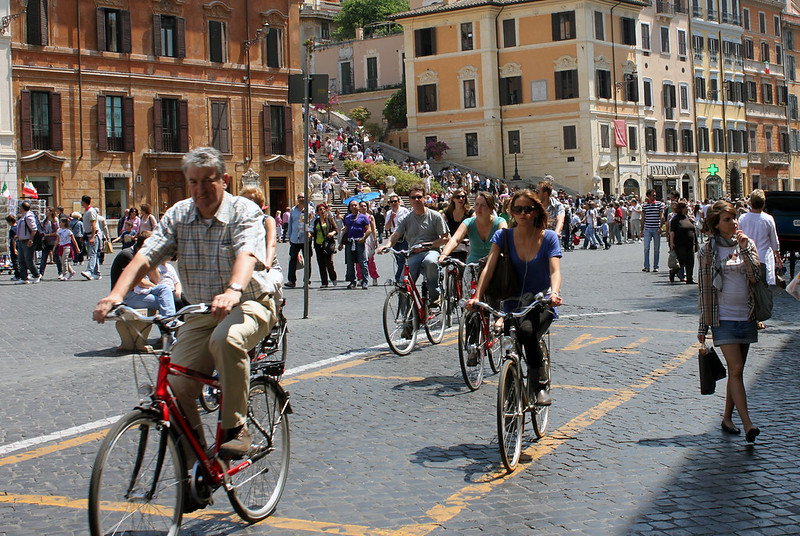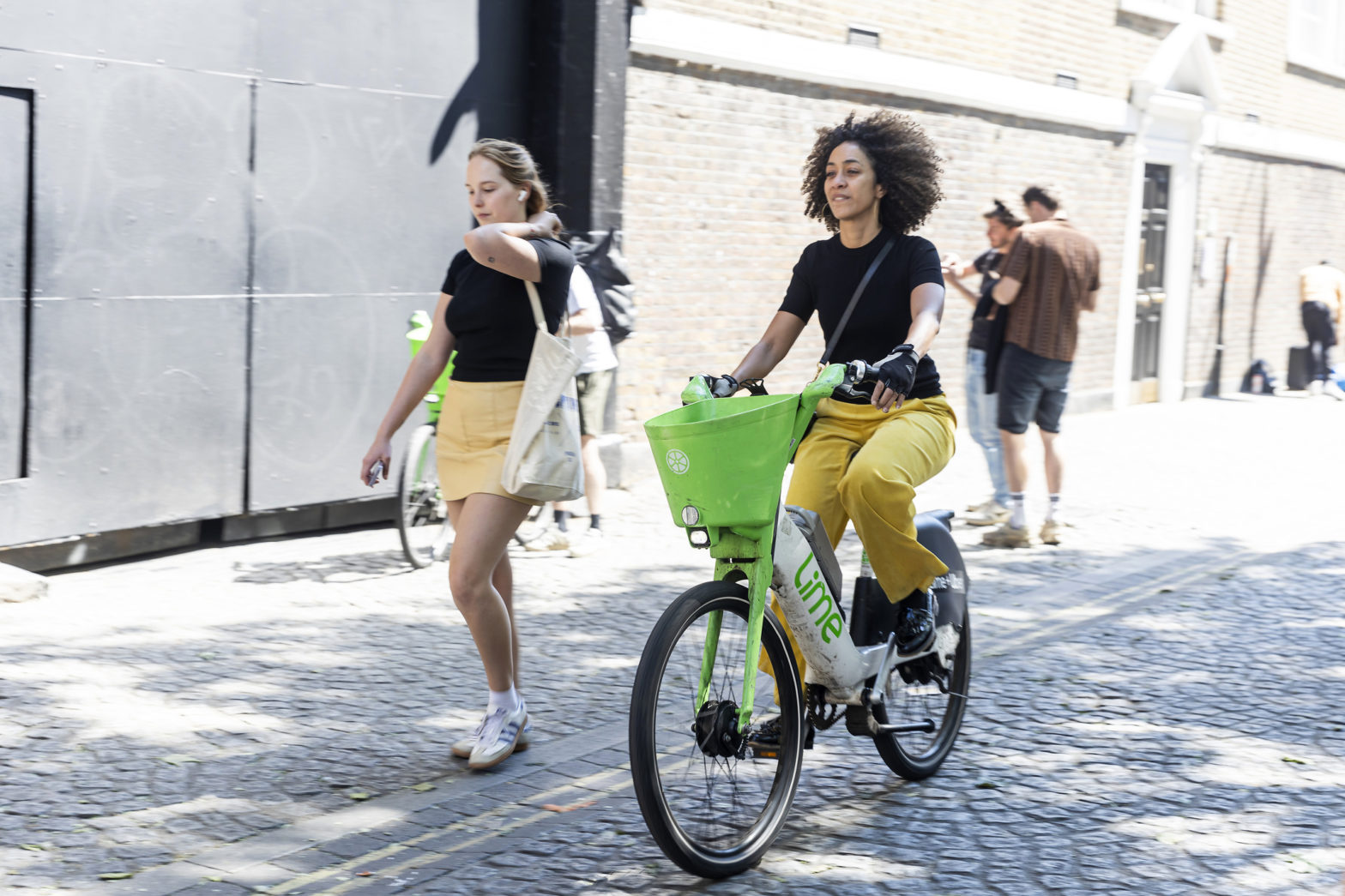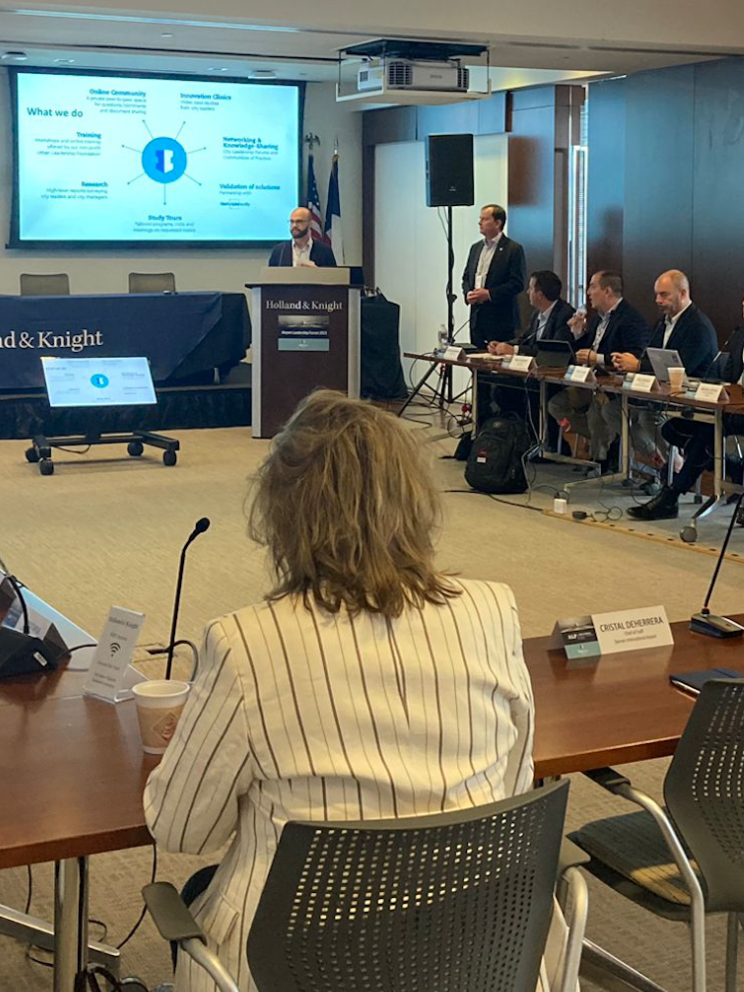
Photo: Tejvan Pettinger (Flickr)
Cities urged to avoid the ‘COP26 trap’ on active travel
25 November 2021
by Christopher Carey
Cities often speak of the need to increase active mobility, not just as a way of reducing the number of vehicles on streets, but to improve the overall health and wellbeing of residents.
Speaking at the Smart City Expo World Congress in Barcelona last week, a panel of experts discussed how the shift towards active mobility must take a more prominent role in urban design and transport policies, and how the recent COP26 climate change conference has only hastened this need.
“Tomorrow is actually tomorrow, it’s not 20 years down the line,” cautioned Henk Swarttouw, President of the European Cyclists’ Federation.
“We already have a low-tech, low-cost, high-impact alternative available for tomorrow, so we should avoid falling into the trap that the parties at COP26 fell into.”
The trap, according to Swarttouw, was the scale of progress made at the summit and the distant targets set for reducing emissions.
Superblocks
During the pandemic, hundreds of cities grasped the opportunity to reallocate road space in favour of cyclists and pedestrians, creating a new wave of optimism in transport circles.
“If we want to live in a healthier way, with more active lives, we need to move more and be aware that active mobility will be one of the main drivers towards this,” said Eugeni Rico, Senior Mobility Engineer, City of Barcelona.
A report from Barcelona’s Public Health Agency (ASPB) in October found the city’s ‘superblocks’ scheme – where entire neighbourhoods have been transformed to prioritise pedestrians and cyclists and create open green spaces for residents – has resulted in a 25 percent drop in NO2 levels in some areas.
The assessment, carried out over the past three years in three of the city’s four superblocks – Poblenou, Sant Antoni and Horta – included surveys with residents to understand the social impacts, as well as air quality monitoring to measure environmental and health benefits.
15-minute city
Concepts like the 15-minute city – where most daily needs can be met by walking or cycling from residents’ homes – are also gaining more traction, led by cities such as Paris.
Carlos Moreno – the Mayor of Paris’ Special Envoy for Smart Cities and architect of the 15-minute city concept – believes this model is ripe for expansion, but that a ‘one size fits all’ model won’t work.
“This is a global movement, the concept has been embraced by the C40 cities and the Metropolis association of cities,” Moreno told Cities Today.
“The question now is how can we adapt this concept based on the policy of the city, and transform infrastructures – basically: how can we propose a new urban life?”
But as no two cities are the same, what works for one may not work for everyone else.
“Today in the US, for example, we’ve been doing important work with the cities of Boston, Seattle and San Francisco, Moreno said. “Of course, this is very different than, say, Los Angeles, but at the same time in North America we have different structures and private companies interested in proposing this new paradigm.”
“We need all aspects of society to come together on this,” he added.
Tejvan Pettinger (Flickr)







